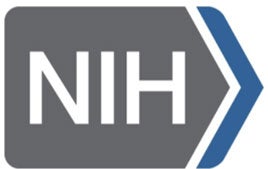
New University of Virginia School of Medicine research highlights how National Institutes of Health research grants are instrumental in nurturing scientific discoveries by young medical trainees. But the findings also reveal how challenging it can be for grant recipients to continue promising biomedical research as their careers unfold.
UVA’s new analysis examines F32 grants awarded to internal medicine trainees and quantifies how many recipients were able to go on to obtain additional funding. F32 grants provide up to 3 years of salary support to allow young researchers to develop the skills needed to do independent research.
The analysis found that the NIH awarded almost $62 million in F32 grants over three decades, resulting in more than 1,750 scientific publications detailing new biomedical discoveries. Of the 735 F32 recipients, a third – 35.6% – subsequently obtained additional support in the form of NIH K grants that would allow them to continue their research.
“It is becoming more and more difficult for young researchers to obtain NIH grant funding. Given increasing demands in the clinical world and limited time, physician-scientists may continue to face challenges in establishing a research program, especially early in their career,” said Adishesh K. Narahari, MD, PhD, who co-led the research with UVA Health’s Neeral L. Shah, MD. “We need to support physicians who are pursuing science and are beginning their careers, or we may lose out on key biomedical discoveries. Without early career funding, many physicians may abandon science in pursuit of clinical medicine, therefore greatly decreasing the diversity, talent and ideas in the next generation of physician-scientists.”
The Next Generation of Medical Researchers
In conducting their analysis, the researchers looked specifically at F32 grants awarded between 1989 and 2021. They found that the vast majority of the grants came from the NIH’s National Heart, Lung and Blood Institute (NHLBI) and the National Institute of Diabetes and Digestive and Kidney Diseases (NIDDK). The NHLBI awarded more than half the grants (54%), while the NIDDK awarded 28%.
The most F32 grants went to trainees in pulmonary and critical care medicine (38.4%), followed by cardiology (18.8%) and nephrology (kidney medicine – 15.8%).
Of the 735 F32 recipients, 262 received prestigious K awards, netting a total of $168 million in additional research funding. This next-step funding produced more than 3,000 scientific publications, focused almost exclusively on findings that can benefit patients.
Trainees in pulmonary and critical care medicine received the most K awards, with approximately 43% of F32 recipients in this group going on to receive a K award.
Nephrology trainees received the second-most K awards, with 38% of F32 recipients parlaying their F32 into a K award. Cardiology was third, with 23% of F32 recipients obtaining a K award.
While those conversion rates may seem low, the researchers note that the figures substantially surpass the 7.5% rate seen among surgery residents. They also note that the relatively high rate seen among trainees in pulmonology and critical care medicine may reflect the large numbers that go into academia – 20% versus only 7%-10% of cardiology fellows.
“As NIH funding comes under more scrutiny, it is important to realize that funding trainees can often lead to further studies and the basis for other research scientists. As evidenced by the number of downstream citations, people around the country and world depend on our young research scientists to bring novel ideas that can result in life saving treatments,” said Shah, a gastroenterologist and medical educator at the UVA School of Medicine. “It is a great accomplishment to receive these grants, but we must find ways to increase funding to our talented physician-scientists through the NIH and not decrease it. This would allow trainees to establish research programs and make biomedical breakthroughs or provide studies that may one day help every one of us or people we care about.”
Findings Published
The researchers have published their analysis as a letter in the Annals of Internal Medicine. The research team consisted of Taylor M. Horgan, Anirudha S. Chandrabhatla, Emily D. Fronk, Simon W. White, Shreya Mandava, Hannah Jacobs-El, Patrick E.H. Jackson, Narahari and Shah.
Article written by Josh Barney, Deputy Public Information Officer, UVA Health.
Filed Under: Research
